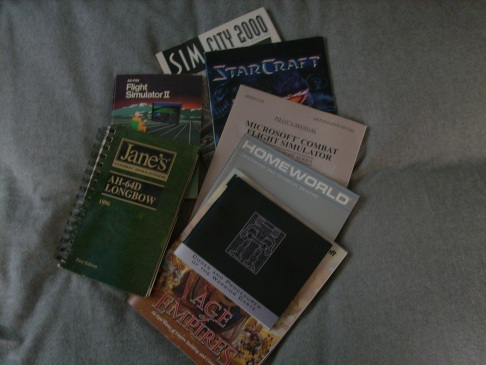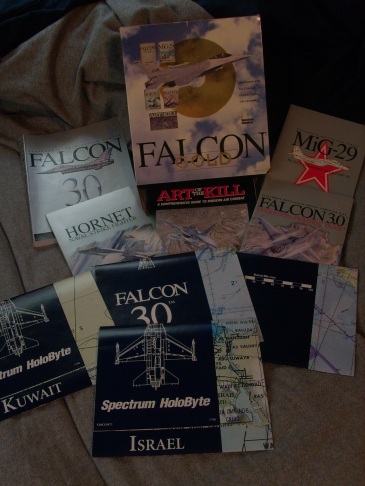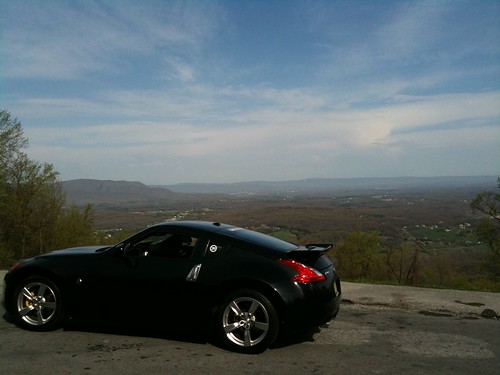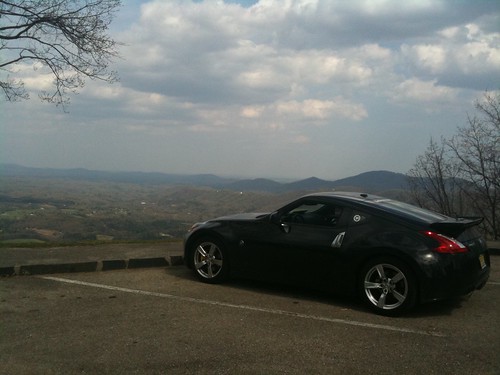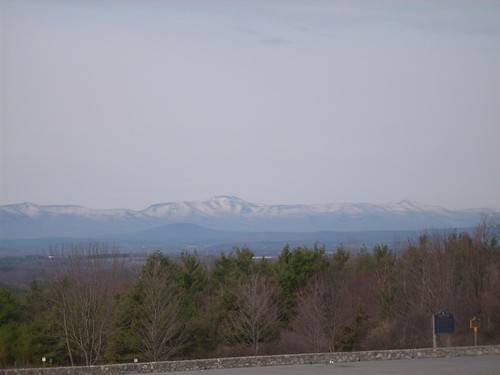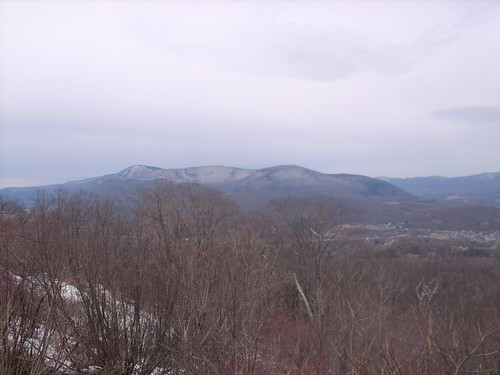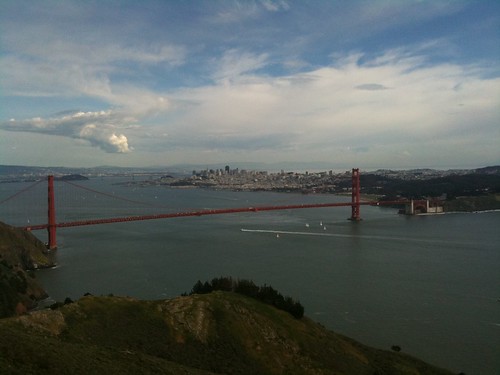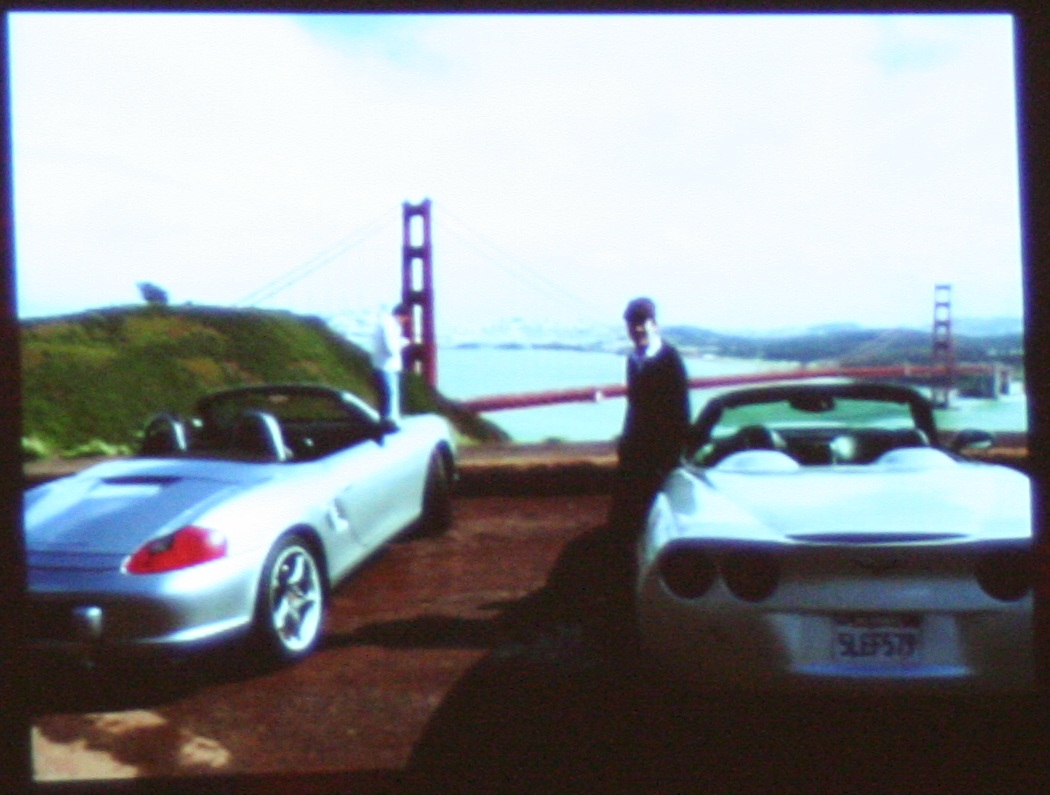This Memorial Day weekend saw me out in the field on Sunday with about 15 other trainees and three experienced chief technicians setting up a small fireworks display for the North Patchogue Fire Dept carnival out on Long Island. This was our first time setting up a show from the ground up – back during our training class we each loaded, wired, tested and fired two 4″ shells, but the racks, grids and mortars were already laid out for us. This time around we had to get the whole shebang up and ready to go. Report time was 12:30, and so after arriving in the area early enough to have a nice Chinese lunch with my friends an fellow Grucci family members Justin & Trish, I showed up at the field with all my gear, ready to rock and roll.
Because of the area we were firing in, we could only send up 4″ shells. This is determined by the rule of 70′ per inch of shell size. If we wanted to fire off a 5″ shell, we would have needed a diameter of 350 feet to work in – and the sports field at the middle school only gave us 280 feet of room – just large enough to fire off 4″ shells. The show was a pretty small one – normally at team of about 3 people would have set it up and we had a total of 19 technicians on the site – 3 chiefs and 16 trainees. But even with all the extra manpower time was lost due to our inexperience so it all balanced out. Still, even for a small show we were shooting off 495 shells in 6.5 minutes!
First step is to unload the truck, which means hauling out all the racks, grids, mortar tubes, product, firing shelter, cables, wires, etc etc. That done, our chiefs walked us through the site plan and how to arrange everything. Then it was time to assemble the racks and grids. Racks need legs to be able to stand upright, and additionally may need to be angled to a certain degree to help spread the bursts across the sky. Grids need the mortar tubes inserted into them after they are assembled. The racks were all handling the 3″ shells, while the grids were holding the 4″ mortars. Here’s everything set up. You can see the wooden racks (each 10 tubes wide) in the foreground, the grids behind them, and the aluminum racks at the back. Notice the grids can be angled as well.
Once all the mortar tubes were in place, it was time to break out the product and wire it all up. I loaded some 10-shell finale chains, which were a bit of a pain in the ass to unravel properly. When you have a time chained batch of shells, they are all wired together with black powder match and obviously you want to insert them in order so the wires don’t get crossed. If that happens, a firing shell could rip out another one on its way up. So for a 10-shell chain you’re dealing with quite a jumble of wires. After getting that all sorted, I attached and then ran the various vote électronique wires from the product to the wiring panel. After everyone had loaded and wired up their product, we tidied up the loose cables so no one would trip over one and rip it out/loose and taped down whatever loose wire were over the mortars. Here’s the final result.
After we hooked up to the firing panel and tested to make sure everything was connected properly, there was really nothing else to do until sundown. We had wrapped setup around 4:30pm, so Grucci brought out some food and water – which isn’t a normal occurrence (water yes, food no) but luckily this was a local show and so some of the other family members came out as well. Some people went over to check out the carnival, but I laid in the grass and caught up on some sleep and my Star Wars ebooks. Finally, the sky started to darken and our showtime approached.
At 9:40pm the test shell shot skyward so we could do a final check of the wind, which was blowing laterally across the field and not towards the audience. 6 trainees wanted to fire the show, which is done manually by electrical firing panel, and one got picked to do so. I was more interested in watching the show – you can’t see the show when you’re firing – all attention is on the panel, with a spotter next to you to let you know if something’s gone wrong. Obviously one of the chiefs was there as well calling out the cues. The rest of us were spaced around the perimeter to watch for debris and make sure no one wandered into our 280 foot safety zone.
The show kicked off and I was soon holding my head with my hands so I wouldn’t cramp my neck since the shells were bursting literally over my head – especially the ones angled towards me. Some burning debris hit the ground about 25 feet away, and I watched to make sure nothing lit up afterwards. About two minutes into the show, one of our finale racks lit off, and I screamed out a curse imagining that our entire finale was going to fire off. Luckily it was just that one rack that went, but it was a rack stringed together with 3 others, so 40 shells launched! So a slight adjustment in firing rate had to be made to cushion the ending – one of the things experienced chiefs learn to deal with.
Everything else seemed to go off fine as far as I could tell, and immediately after the show we were strolling about the field, lights on, collecting up shell debris and making sure no un-exploded shells had landed in the field. After several minutes of waiting, to make somewhat sure no unlaunched product actually did launch, the chiefs approached the racks and grids for an inspection. I finished gathering up debris and heading over just in time to hear our head chief call out “I got good news and bad news.” We all asked for the bad news first. “Bad news, is we made one hell of a fucking mess over here.” We all laughed, because that’s normal. And the good news? “It looks like you guys fired 100%!” That brought out a cheer. Since we don’t hand fire shows (dangerous, but still in practice for some companies today) there’s always a chance some wire will get messed up during firing or some electrical glitch will short out a shell or chain of shells. It’s more common to send a small handful of shells (that also may have just been duds) back to the plant than it is to send them all up in the air. As I said earlier, it was a relatively small show, so our chances of shooting 100% were greater – additionally we wired the hell out of everything to anticipate and overcome any possible faults – but it was still satisfying to know that everything we came with lit up the night sky.
As for that finale chain that went up early, the chiefs double-checked the wiring after the show and affirmed that everything was hooked up properly – so that’s a mystery they’ll have to solve back at the offices – but at least it wasn’t anything we did!
We all tore down the equipment and packed up the truck in a little over an hour, and then it was all over. I certainly can’t complain a bit about my first show! On the other hand, it was a bit of a pampered show, with so many people and local support from the company, but I realize that as well. I jump into a “real” real show on my next outing, which is sometime in June. And then, of course, there’s the 4th of July.
Icing on the cake was making it to and from Long Island with no tickets 🙂





